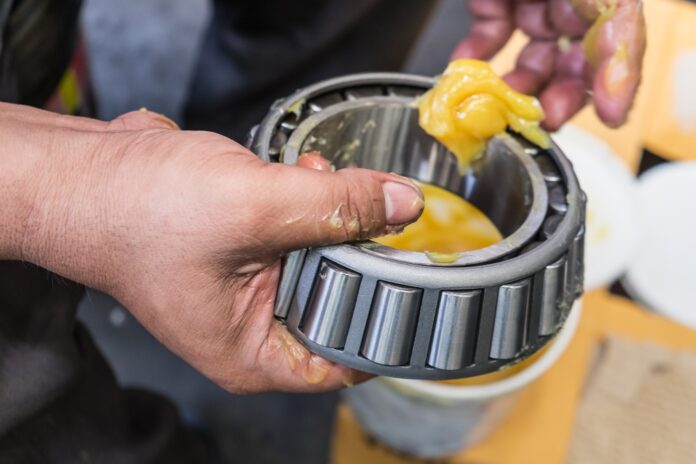Trucks operate in some of the worst environments imaginable – low temperatures, high temperatures, dust, water, dirt, snow, salt, and the use of de-icing chemicals. These extreme conditions and corrosive elements can damage the mechanical linkages that control steering and other load-bearing interfaces on heavy-duty vehicles. The grease used on trucks and other vehicles needs to perform in these environments to protect the investment in trucks and trailers used every day. Grease is the most common and multipurpose lubricant that is used for all automotive and industrial applications. It is used to lubricate any bearing assembly in vehicles, and choosing the right type of grease is very important.
All greases are made up of three basic components: lubricating oil, additives, and thickener. The two most common ingredients in every grease are oil and a thickening agent. Other compounds are added to standardize the demand of specific applications or environments. The NLGI (National Lubricating Grease Institute) has standardized grades for the thickness of grease. i.e. NLGI #00 EP, NLGI #1 & #2, NLGI #1 and #2 * 5% Moly, NLGI #2, GC-LB, NLGI #2, GC-LB. These standards are acceptable in the industry, and many fleet managers consider these NLGI grades to be the primary indication of good grade grease. Here is a basic guide to choosing the best grease for truck chassis and components to help you choose the right product.
Understanding the Classification and Consistency to Analyze for Choosing the Right Grease for Your Truck
Different greases are applied to different parts of vehicles. NLGI has made chassis-specific grease as ‘LB’ while wheel bearing grease is labeled as ‘GC’. Many experts recommend using a GC-LB labeled grease that can be used with these two components without any problems. The NLGI standard grease varies from 000 (triple-knot) to 6 in terms of stability. No. 0 grease is as thin or liquidy as cooking oil, while No. 6 grease is almost similar in consistency to solid wax. Most trucks require No. 1 or No. 2 grease, grade No. 1 is often used in cold climates where mechanical services cannot be administered in a hot shop. Some fleet managers think that using No. 2 grease will increase the longevity of their trucks, but due to some standard lubrication processes, using No. 2 grease unnecessarily can cause excess grease to precipitate out of the interface seal, creating additional waste and clinging to unwanted contaminants.
Wrapping Up:
Grease is an expensive investment for your truck, but good quality grease is vital to reducing wear and downtime on components. Most fleet managers choose synthetic grease products. While more expensive than their conventional counterparts, synthetic greases offer great benefits for the fleet, including improved performance in high and low-temperature settings and increased longevity for truck components. Choosing synthetic grease can be expensive, but the benefits will far outweigh the cost of lost productivity and frequent mechanical services for your trucks. Choosing the right and best grease for truck chassis application and combining it with an automatic lubrication system will help reduce repair costs and downtime while keeping your fleet running smoothly and profitably.








